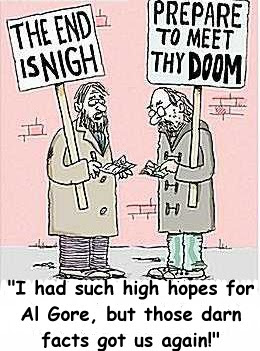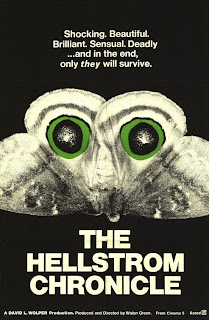
When it comes to food and fat, the government’s health gurus are suddenly coming at us from two different directions, betraying a debilitating ailment not often associated with diet.
Bipolar disorder.
Witness the schizophrenic surprises unveiled in quick order on Tuesday from, on the one hand, the Centers for Disease Control and Prevention and, on the other, the U.S. Department of Agriculture.
The latest obesity numbers establish that the CDC has drastically exaggerated the U.S. death rate from obesity, while the USDA is now pushing an ostensibly new and improved version of its 1992 nutritional guidelines model known as the “food pyramid.”
First, the pyramid.

For a not-so-slim $2.5 million, the USDA signed up the marketing firm Porter Novelli to repackage the idea. Now, instead of a stodgy old pile of rocks, the guide, renamed “MyPyramid,” is a brightly colored cluster of sharp points reminiscent of a 1970s subway map, flourished with a singlet-clad cartoon figure running up a flight of stairs, meant to indicate the importance of exercise. It was accompanied by the unveiling of the USDA’
"my pyramid" website, which offers different pyramids based on age, weight, sex and physical activity levels.
The new plan actually chucks out altogether the original visual/spatial rationale for using the “pyramid” image in the first place.
Remember?
Just to restate the obvious, the idea behind the structure’s tapering shape was to convey the notion that you should consume more of some foods like grains, which therefore made up the widest level of the pyramid at the base, and less of other foods, a distinction represented by their respectively small
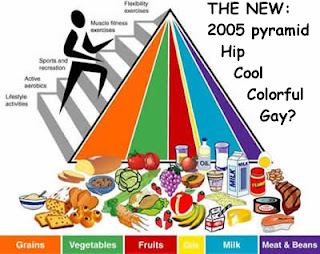
er positions on progressively narrower levels as you moved up the pyramid. Fats and sweets, least desirable, therefore occupied the smallest space at the point.
This time, the food group strata are assembled vertically and the width
of each colored triangle is now meant to convey how much we should consume: a nice broad orange stripe for grains, a wide green one for vegetables and a slender yellow sliver for fats. Yes, in its new incarnation, the oh-so-logical pyramid has been reimagined.
…..as essentially a bright color coded bar chart!
Food consultant Clark Wolfe told the San Francisco Chronicle that the rainbow striping and the jogger in Spandex make it look as if "all you need to do to be healthy in America is be gay and exercise."
Critics asked what next, a food cube? A food dodecahedron? Blogress Michele Catalano skewered it deliciously by reintroducing a much more inviting, albeit nastier diet plan, one even I could love: her
food pentagram.
I try to be visually accurate by imagining it as more a food
octagonal pyramid.
Even USDA speechwriting director Matt Raymond admits to entertaining notions of a “food octahedron" or a "food Möbius strip,” before deciding that, under the circumstances, the best design might be a big red
food octagon.
Former restaurant critic and New York Times food editor Raymond Sokolov dubbed the new edifice “McPyramid” and declared “McPyramid is just the kind of burea
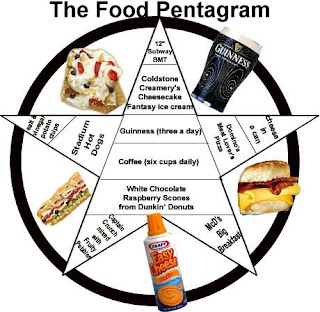
ucratic intrusion into our lives that a conservative administration should be lopping out of agency budgets with a meat axe.”
But all well deserved jibing aside, the new pyramid initiative has its exercise-enhanced, plaque-unencumbered, heart in the right place. Especially with the introduction of customization on its
website, the effort signals that, after decades of ignoring it, the USDA is finally embracing one obvious reality of diet, fitness, and health. Americans are actually different from each other and some consideration must be given to individual discretion and responsibility.
It remains a very different story at the CDC which is still hemming, hawing and hedging after being caught trying to scare Americans with its apocalyptic pontification that being overweight is on par with the Black Death, and that obesity will kill 400,000 Americans a year.
The CDC unveiled the numbers in a blast of fire and brimstone in March of 2004 and proclaimed obesity will overtake tobacco as the number one cause of preventable death in the U.S.
On Tuesday, an analysis of the CDC’s research published in the Journal of the American Medical Association concluded the CDC wasn’t even close.
The analysis found obesity causes only 112,000 deaths a year and that in elderly populations, being overweight actually
saves 86,000 lives.
The kindest response to this gross error would be to conclude that CDC leaders made a perfectly understandable honest scientific mistake.
But the truth is out there already.
They
knew.From even before the original announcement of the figures more than a year ago, there was ample evidence that their numbers, so outlandish that they should have aroused doubts and questions, were replete with doubts and questions.
Only two months after last year’s dire forecast , Science magazine reported “Some researchers, including a few at the CDC, dismiss this prediction, saying the underlying data are weak. They argue that the paper's compatibility with a new anti-obesity theme in government public health pronouncements -- rather than sound analysis -- propelled it into print.”
In February, the CDC admitted after its own reexamination that the bogus numbers had been improperly released at least in part because some of its own scientists, who knew better, were intimidated into keeping their mouths shut.
Ideally, this saga would now end, as a nice story of lessons learned.
But a bureaucracy with an agenda will not be turned so easily.
Far from acknowledging it had run off the rails to make a point, the CDC suddenly tap danced around the question of whether its own numbers were to be embraced. The Associated Press reports "CDC Director Dr. Julie Gerberding said because of the uncertainty in calculating the health effects of being overweight, the CDC is not going to use the brand-new figure.”
Well, gee, the folks at the CDC certainly seemed willing to make a big deal about the numbers when they favored doomsaying hysteria. Why change now?
Politics.
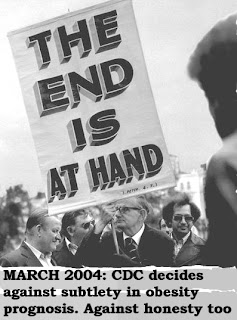
For years, bio statisticians have been alarmed at the runaway collusion between researchers trying to score political points or dig up funding via dramatic numbers and reporters trying to dig up a more gripping story. Inevitably, they seize upon the “worst case” in
any scenario to generate the juiciest headline.
Medical experts say hysterical overstatement, especially of big statistics, can become an occupational hazard when health issues get batted around in the public square. Yale biostatistics professor Daniel Zelterman says organizations’ agendas can routinely skew the numbers. “Do you want to say we’re winning the war on cancer, or that we need more research?”
Former National Institutes of Health director Dr. Harold Varmus calls it “body based budgeting.”
But even if the CDC still isn’t doing an immediate 180 from its chicken little rampage of a year ago, there may yet be a glimmer of sanity in this misadventure.
In the aftermath of the latest revelations, spokesman Tom Skinner said the agency will probably start using a range of estimates for obesity-linked deaths.
“A range.”
Well, that’s better than “wolf! wolf!”
...which brings us right back to the Agriculture Department and its new food pyramid.
The CDC’s “clarification” on the obesity stats and the release of the new and improved pyramid coincide nicely to highlight the same issue: oversimplification, dumbing down, doctrinaire heavy handedness
The CDC chose one course, using scare tactics and a least-common-denominator blanket approach, while the USDA has gone in another direction, advocating greater personal discretion and a startlingly grown up acknowledgement that not all people are the same and that a pedantic, simplistic “one size fits all” approach to something as complex as nutrition helps no one.
Perhaps someday, someone will analyze just how much damage is actually done to the public welfare by overwrought Cassandra clarion calls about what’s going to kill us next. Time and again, Americans hear one ex cathedra health pronouncement after another that strain credulity to begin with, then see them contradicted a few months later.
Will they eventually listen to
anyone?It’s time to stop the scare tactics and reason with us.
The cutesy new food pyramid may be a step in the right direction. In the hours after its release, the
"my pyramid" website was reduced to a crawl because so many people logged on.
Behold. Those who are genuinely interested in intelligent, more individualized advice will seek it out (and will apparently put up with some inconvenience to do so).
I think NYU nutrition professor Marion Nestle actually intended to
criticize the new pyramid when she griped “It’s all about moderation and personal responsibility.”
But what she was really doing was articulating its best feature.
That’s precisely what it’s all about.
Always has been.
April 23, 2005


.gif)
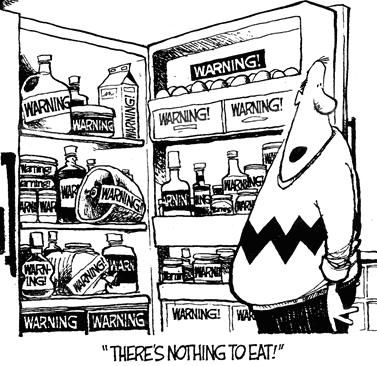









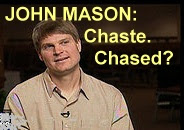


.gif)
.gif)

